
Are you passionate about capturing the beauty of the natural world through photography? After extensive research and experience, I am here with a guide to help you find the best camera lens for nature photography. Whether you’re a seasoned expert or a newcomer, this article is your go-to resource for selecting the perfect camera lens.
If you are new to the photography journey, I suggest checking out my blog on the beginner’s guide for buying camera lenses. This will give you a foundation for choosing the right camera lens.
List of the best camera lens for nature photography [Quick Overview]
- Canon EF 16-35mm f/4L IS USM
- Sony FE 12-24mm f/2.8 GM
- Nikon AF-S 16-35mm f/4G ED VR
- Canon RF 15-35mm f/2.8L IS USM
- Nikon Z 14-30mm f/4 S
- Fujifilm XF 10-24mm f/4 R OIS
- Sony E 10-18mm f/4 OSS
- Fujifilm XF 16-55mm f/2.8 R LM WR
- Canon EF 24-70mm f/2.8L II USM
- Canon EF 24-105mm f/4L IS II
- Sony FE 70-200mm f/4 G OSS
Detailed Analysis of Best Camera Lens For Nature Photography
1. Canon EF 16-35mm f/4L IS USM
- The Canon EF 16-35mm f/4L IS USM has a focal length range ideal for capturing wide landscapes.
- The Canon EF 16-35mm f/4L IS USM has a f/4 maximum aperture, allowing it to perform well in low light and providing a shallow field depth for creative effects.
| Brand | Canon |
| Type | Ultra-wide-angle zoom lens |
| Lens format coverage | Full-frame |
| Compatible Mounting | Canon EF |
| Angle of view | 108.10 – 63 degrees |
| Image Stabilization | Yes, 4-stop Image Stabilizer |
| No.of diaphragm blades | Nine blades |
| Lens construction | 16 elements in 12 groups, including three aspherical and 2 UD elements |
| Minimum focus distance | 0.28m/0.92ft |
| Weight | 615g/21.7oz |
| Adjustment | Manual/autofocus |
| Durability | Weather-sealed construction |
| Chromatic Aberration | Minimal |
Reasons to buy:
- Versatile telephoto zoom range.
- Optical SteadyShot image stabilization.
- Compact and lightweight design.
- High-quality optics.
Reasons to avoid:
- Relatively heavy and bulky.
- Expensive
2. Sony FE 12-24mm f/2.8 GM
- The Sony FE 12-24mm f/2.8 GM lens provides an ultra-wide-angle perspective, allowing you to capture expansive scenes.
- The fast f/2.8 aperture of this lens ensures excellent low-light performance, enabling you to shoot in challenging lighting conditions without sacrificing image quality.
| Brand | Sony |
| Type | Ultra-wide-angle zoom lens |
| Lens format coverage | Full-frame |
| Compatible Mounting | Sony E-mount |
| Angle of view | 122 – 84 degrees. |
| Image Stabilization | No image stabilization |
| No.of diaphragm blades | 9 |
| Lens construction | 17 elements in 14 groupsIncluding 3 XA elements, 2 Super ED elements, and 3 ED elements |
| Minimum focus distance | 28 cm |
| Weight | 847 g |
| Adjustment | Focus hold button, Autofocus/Manual Focus switch, zoom lock switch |
| Durability | Dust and moisture-resistant design |
| Chromatic Aberration | Minimal chromatic aberration |
Reasons to buy:
- Extremely wide field of view
- Fast f/2.8 maximum aperture
- Excellent image quality & sharp even at wide open apertures
- Low chromatic aberration
- Weather-sealed construction
Reasons to avoid:
- Large and heavy
- Expensive
- No image stabilization
3. Nikon AF-S 16-35mm f/4G ED VR
- The Nikon AF-S 16-35mm f/4G ED VR lens provides Full-frame (FX) format coverage, making it suitable for Nikon’s full-frame DSLR cameras.
- It features a constant maximum aperture of f/4 throughout its zoom range, providing consistent exposure settings and good low-light performance.
| Brand | Nikon |
| Type | Wide angle lens for DSLRs |
| Lens format coverage | Full-frame (FX) and APS-C (DX) sensors |
| Compatible Mounting | Nikon F, Nikon DSLRs also |
| Angle of view | 107 to 63 degrees. |
| Image Stabilization | Yes, Vibration Reduction (VR) technology |
| No.of diaphragm blades | Nine blades |
| Lens construction | 17 elements in 12 groupsIncluding 2 ED and three aspherical elements |
| Minimum focus distance | 0.28 m |
| Weight | 680 g |
| Adjustment | Manual/autofocus |
| Durability | Weather-sealed construction |
| Chromatic Aberration | Minimal chromatic aberration and distortion |
Reasons to buy:
- Amazing all-round performance.
- Good handling.
- Robust build quality.
Reasons to avoid:
- Fixed aperture at f/4.
- Modest stabilization.
4. Canon RF 15-35mm f/2.8L IS USM
- The Canon RF 15-35mm f/2.8L IS USM lens offers Full-frame (RF) format coverage, designed specifically for Canon’s mirrorless cameras.
- A fast and constant maximum aperture of f/2.8, enabling excellent low-light performance and creative depth-of-field control.
| Brand | Canon |
| Type | Wide angle, L Series lens |
| Lens format coverage | Full frame |
| Compatible Mounting | Canon RF |
| Angle of view | N/A. |
| Image Stabilization | Yes, up to 5 stops of correction |
| No.of diaphragm blades | Nine blades |
| Lens construction | 16 elements in 12 groupsIncluding three aspherical and 2 UD elements |
| Minimum focus distance | 0.28 m |
| Weight | 840 g |
| Adjustment | Manual focus override, Nano USM autofocus system for fast and quiet autofocus |
| Durability | Weather-sealed construction |
| Chromatic Aberration | Minimal chromatic aberration and distortion |
Reasons to buy:
- Image stabilized.
- Super fast and silent focus.
- Wide-angle coverage.
Reasons to avoid:
5. Nikon Z 14-30mm f/4 S
- The Nikon Z 14-30mm f/4 S lens provides Full-frame (FX) format coverage, exclusively designed for Nikon’s Z-series mirrorless cameras.
- A constant maximum aperture of f/4, offering good low-light capabilities and consistent exposure settings throughout the zoom range.
| Brand | Nikon |
| Type | Wide-angle zoom lens |
| Lens format coverage | Full frame |
| Compatible Mounting | Nikon Z |
| Angle of view | N/A. |
| Image Stabilization | No image stabilization |
| No.of diaphragm blades | Seven blades |
| Lens construction | 14 elements in 12 groups,Including 4 ED and four aspherical elements |
| Minimum focus distance | 0.28 m |
| Weight | 485 g |
| Adjustment | Manual focus override, Stepping Motor (STM) autofocus system for fast and quiet autofocus |
| Durability | Weather-sealed construction |
| Chromatic Aberration | Minimal chromatic aberration and distortion |
Reasons to buy:
- Fast and quick autofocus.
- Good image quality.
Reasons to avoid:
- There is no image stabilization & focus distance scale.
- Expensive for f/4 wide-angle zoom.
6. Fujifilm XF 10-24mm f/4 R OIS
- The Fujifilm XF 10-24mm f/4 R OIS lens is Designed for Fujifilm X-mount cameras, providing an APS-C format coverage.
- A constant maximum aperture of f/4 is suitable for various shooting scenarios and offers good low-light performance.
| Brand | Fujifilm. |
| Type | Wide angle zoom lens. |
| Lens format coverage | APS-C |
| Compatible Mounting | Fujifilm X |
| Angle of view | 110 – 61.2 degrees |
| Image Stabilization | Yes, up to 3.5 stops of correction |
| No.of diaphragm blades | Seven blades |
| Lens construction | 14 elements in 10 groupsIncluding four aspherical and 3 ED elements |
| Minimum focus distance | 0.24 m |
| Weight | 410 g |
| Adjustment | Stepping motor for autofocus. |
| Durability | Weather sealed. |
| Chromatic Aberration | Minimal chromatic aberration and distortion |
Reasons to buy:
- Exceptional short zoom sharpness.
- Robust build quality.
- Compact and lightweight.
Reasons to avoid:
- Expensive for APS-C lens format.
- Stabilization only up to 3 stops.
7. Sony E 10-18mm f/4 OSS
- The Sony E 10-18mm f/4 OSS lens is Designed for Sony E-mount APS-C format cameras, making it suitable for a wide range of Sony’s mirrorless cameras with APS-C sensors.
- A maximum aperture of f/4 throughout its zoom range, offering versatility for various shooting conditions and styles.
| Brand | Sony |
| Type | Super wide-angle zoom lens |
| Lens format coverage | APS-C |
| Compatible Mounting | Sony E mount |
| Angle of view | 109 – 76 degrees. |
| Image Stabilization | Yes, Optical SteadyShot (OSS) technology |
| No.of diaphragm blades | Seven blades |
| Lens construction | Ten elements in 8 groupsIncluding three aspherical and 1 ED element |
| Minimum focus distance | 0.25 m |
| Weight | 225 g |
| Adjustment | Autofocus – stepping motor |
| Durability | Metal body construction |
| Chromatic Aberration | Minimal chromatic aberration and distortion |
Reasons to buy:
- Includes optical steady shots.
- Lightweight and compact.
Reasons to avoid:
- Sharpness is lacking at f/4.
- Stabilization only of 3 stops.
8. Fujifilm XF 16-55mm f/2.8 R LM WR
- The Fujifilm XF 16-55mm f/2.8 R LM WR lens is Designed for Fujifilm X-mount cameras, providing APS-C format coverage.
- A constant and wide maximum aperture of f/2.8, enabling excellent low-light performance and creative depth-of-field control.
| Brand | Fujifilm |
| Type | Standard zoom lens |
| Lens format coverage | APS-C |
| Compatible Mounting | Fujifilm X |
| Angle of view | 83.2 – 29 degrees |
| Image Stabilization | No image stabilization |
| No.of diaphragm blades | Nine blades |
| Lens construction | 17 elements in 12 groupsIncluding three aspherical and 3 ED elements |
| Minimum focus distance | 0.3 M |
| Weight | 655 g |
| Adjustment | The lens features a manual focus ring, an aperture ring, and a Focus/Zoom Lock switch for quick and precise adjustments. |
| Durability | Weather-sealed construction |
| Chromatic Aberration | Minimal chromatic aberration and distortion |
Reasons to buy:
- High-quality optics.
- Weather-sealed construction.
- Fast f/2.8 maximum aperture.
Reasons to avoid:
- No image stabilization
- Relatively heavy and bulky compared to other standard zoom lenses.
9. Canon EF 24-70mm f/2.8L II USM
- The Canon EF 24-70mm f/2.8L II USM lens features designed for Canon EF-mount DSLR cameras, providing full-frame (35mm) format coverage.
- A fast and constant maximum aperture of f/2.8, offering exceptional low-light performance and creative control over depth of field.
| Brand | Canon EF |
| Type | Standard zoom lens |
| Lens format coverage | Full frame |
| Compatible Mounting | Canon EF |
| Angle of view | 84 – 34 degrees |
| Image Stabilization | No image stabilization |
| No.of diaphragm blades | Nine rounded aperture blades. |
| Lens construction | 18 elements in 13 groups. |
| Minimum focus distance | 0.38 meter/1.25 feet |
| Weight | 805 g. |
| Adjustment | Inner focusing with USM.The Zoom lock lever locks the zoom position at the wide end for safe transporting. |
| Durability | Solid build quality and very professional. You get what you pay for. |
| Chromatic Aberration | Provide high-quality images with minimal chromatic aberration. |
Reasons to buy:
- Incredibly sharp
- Versatile zoom range.
- Fast and accurate autofocus.
- Durable build quality.
Reasons to avoid:
- No image stabilization.
- Weight and bulk may not suit all photographers.
10. Canon EF 24-105mm f/4L IS II
- The Canon EF 24-105mm f/4L IS II lens is designed for Canon EF-mount DSLR cameras, providing full-frame (35mm) format coverage.
- A maximum aperture of f/4 throughout the zoom range makes it versatile for various shooting conditions and offers image stabilization (IS) for sharper handheld shots.
| Brand | Canon |
| Type | Standard zoom lens |
| Lens format coverage | 24-105mm |
| Compatible Mounting | Canon EF mount |
| Angle of view | N/A. |
| Image Stabilization | Four stops of image stabilizationhelps to minimize camera shake and produce sharp images |
| No.of diaphragm blades | Ten blades |
| Lens construction | 17 elements in 12 groupsincluding four glass-molded (GMo) aspherical lenses and one super UD (ultra-low dispersion) lens |
| Minimum focus distance | 0.4m |
| Weight | 795 g |
| Adjustment | Autofocus with full time manual focus override. |
| Durability | Dust- and water-resistant switch panel, zoom and focus rings, and lens mount.Fluorine coating |
| Chromatic Aberration | Barrel distortion |
Reasons to buy:
- Extensive weather seals
- Constant aperture value
- Four-stop image stabilizer
Reasons to avoid:
- Barrel distortion
11. Sony FE 70-200mm f/4 G OSS
- The Sony FE 70-200mm f/4 G OSS lens provides Full-frame (FE) format coverage, designed for Sony’s full-frame E-mount mirrorless cameras.
- A maximum aperture of f/4, offering good low-light performance and consistent exposure settings throughout the zoom range.
| Brand | Sony |
| Type | Telephoto zoom lens |
| Lens format coverage | Full frame |
| Compatible Mounting | Sony E |
| Angle of view | N/A. |
| Image Stabilization | Yes, Optical SteadyShot (OSS) technology |
| No.of diaphragm blades | Nine blades |
| Lens construction | 21 elements in 15 groups |
| Minimum focus distance | 1 m |
| Weight | 840 g |
| Adjustment | The lens features a manual focus ring, an AF/MF switch, and an intuitive zoom ring for quick and precise adjustments. |
| Durability | Weather-sealed construction |
| Chromatic Aberration | Minimal chromatic aberration and distortion |
Reasons to buy:
- Versatile telephoto zoom range for capturing distant subjects.
- Excellent image quality with sharpness and clarity.
- Optical image stabilization (OSS)
- Relatively compact and lightweight
Reasons to avoid:
- The lens lacks a built-in tripod collar, which may limit stability and mounting options for specific shooting scenarios.
- The maximum aperture of f/4 may not be sufficient for low-light situations
What to look for in the best camera lens for nature photography
Aperture
In nature photography, prioritize lenses with a wide maximum aperture (e.g., f/2.8 or wider). This allows for more light, enabling faster shutter speeds for capturing fleeting moments and creating a beautiful background blur (bokeh) that isolates subjects from distractions, enhancing the overall aesthetic of your nature shots.
- Landscape photography: f/8 to f/11
- Wildlife photography: f/4 to f/5.6
- Portrait photography: f/2.8 to f/4
- Macro photography: f/5.6 to f/8
Focal Length
For nature photography, consider lenses with varying focal lengths. Wide-angle lenses (e.g., 16-35mm) capture landscapes and vast scenes, while telephoto lenses (e.g., 70-200mm) bring distant subjects closer. A versatile zoom lens (e.g., 24-70mm) strikes a balance, making it suitable for various nature photography scenarios, from landscapes to wildlife.
Autofocus
Select a fast and accurate autofocus (AF) lens for nature photography. Look for advanced AF technologies like ultrasonic or linear motors, which provide quick and silent focusing. Additionally, consider lenses with customizable focus settings to adapt to varying subjects, ensuring you can precisely capture wildlife and fleeting moments.
Image Stabilization / Vibration Reduction
When choosing a lens for nature photography, prioritize those with built-in Image Stabilization (IS) or Vibration Reduction (VR). This feature minimizes camera shake, allowing for sharper handheld shots, especially in low-light conditions or when using telephoto lenses for wildlife photography, ensuring your nature images are crisp and clear.
Weather Resistance
Opt for lenses with a weather-resistant construction for nature photography. Look for features like rubber gaskets and sealed seams, denoted by terms like “WR” or “Weather-Sealed.” These lenses can withstand rain, dust, and harsh outdoor conditions, protecting your equipment during outdoor shoots in unpredictable weather.
Best camera lens for nature photography FAQs
What camera lens is best for nature photography?
Wide-angle and ultra-wide-angle lenses stand out as landscape photography favorites. They typically span focal lengths of 14-35mm, with a few extending as wide as 10 or 12mm.
What makes a great nature photograph?
It should spark your interest in the main subject and maybe even surprise you. Photography is like a window to our emotions, taking you to places you might never visit otherwise. Conservation International’s photos are bold, colorful, and full of hope, using bright and cheerful colors.
Can you make a living as a landscape photographer?
There is a way! You must learn how to get there and begin making money as a professional landscape photographer. The demand for landscape photos still exists worldwide.
Who will buy my nature photos?
The top method to sell your nature photos online is through your website, offering them as digital downloads. You can also sell them on stock image websites like Shutterstock, 123RF, Dreamstime, and iStockPhoto.
Conclusion
After extensive research, it’s evident that the best camera lens for nature photography, especially when capturing birds in their natural habitat, boasts a wide aperture, rapid autofocus, and robust weather-sealing. This combination ensures the lens’s capability to immortalize the awe-inspiring beauty of the wilderness, including the grace of avian creatures.
While many excellent options are available, finding the best camera lens for nature photography that best suits your specific needs, as well as your personal preferences and budget, will ultimately lead to stunning and memorable nature photography.
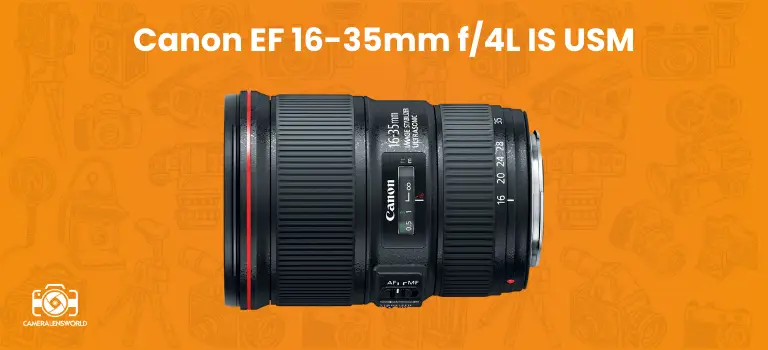


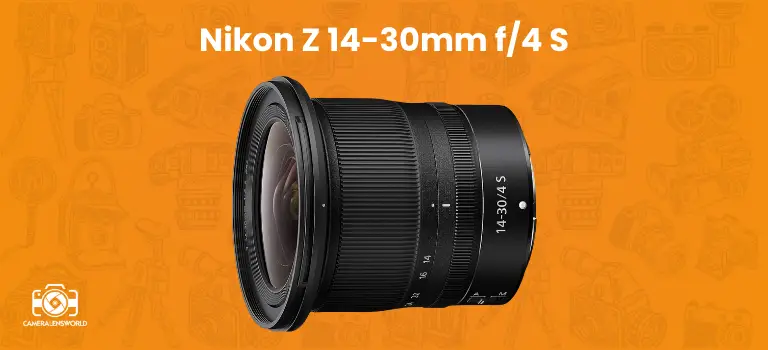
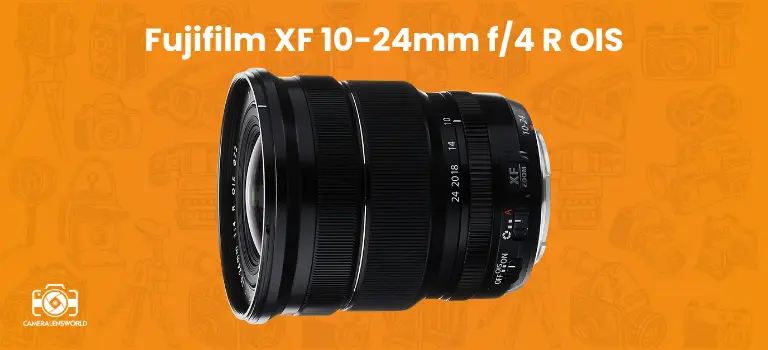

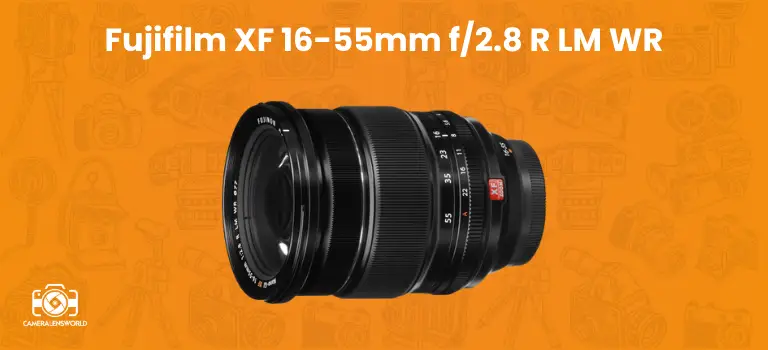

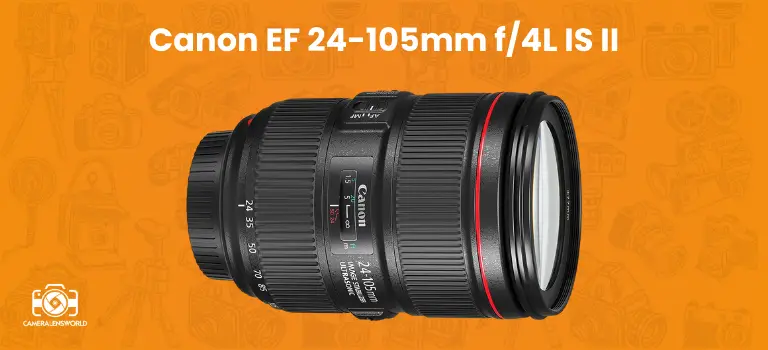
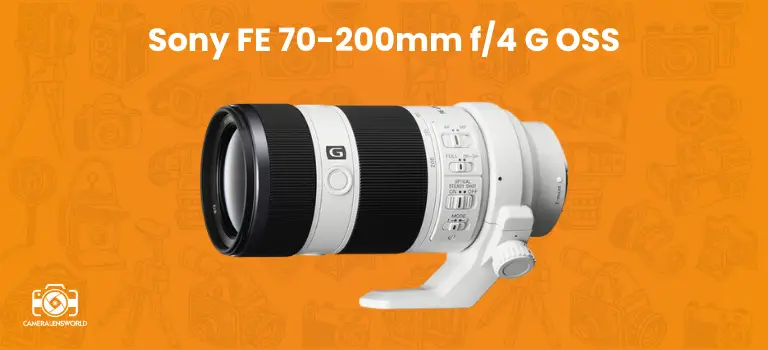

Leave a Reply
You must be logged in to post a comment.